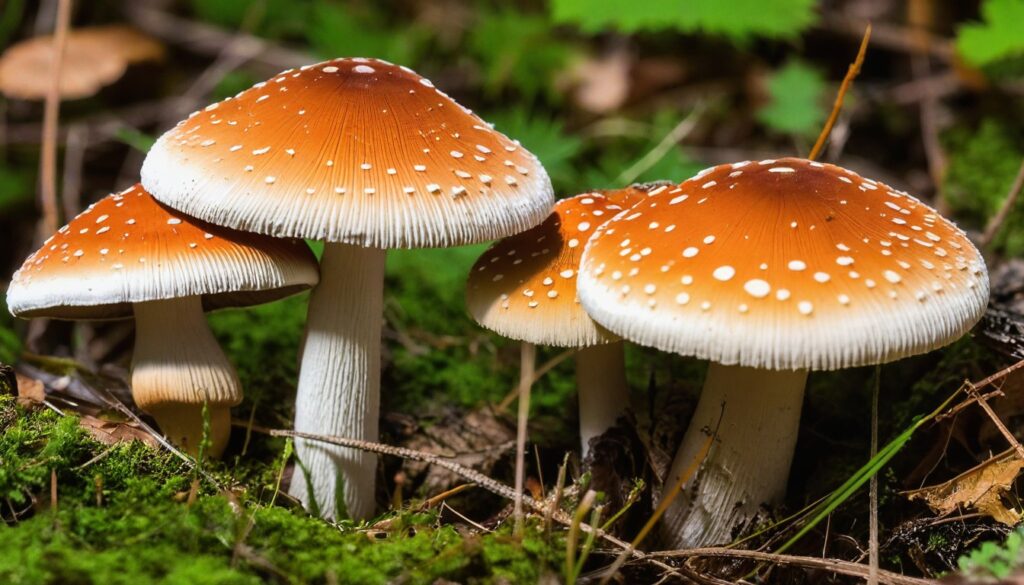Welcome to our guide on the common mushrooms found in New Jersey. With its diverse terrain and abundant forests, New Jersey is an excellent location for mushroom foraging. Whether you are a seasoned forager or are just starting, this forager’s guide will equip you with the knowledge to safely identify and harvest mushrooms in the Garden State.
Key Takeaways
- Learn about common mushroom species in New Jersey
- Discover the importance of mushroom foraging
- Understand crucial safety precautions for mushroom hunting
- Find out about edible and toxic mushrooms common in New Jersey
- Explore the best foraging locations and tools
Importance of Mushroom Foraging
Mushroom foraging offers a plethora of benefits beyond the excitement of the hunt. In fact, it can contribute positively to both your health and the environment.
Potential Health Benefits
Many species of mushrooms are rich in key vitamins and minerals, making them a healthy addition to any diet. Certain varieties, such as the popular shiitake mushroom, have been linked to boosting immunity, reducing inflammation, and promoting heart health. Additionally, foraging for mushrooms can be a great way to get outside and engage in physical activity, benefiting overall health and wellness.
Ecological Balance
Foraging for mushrooms can also play a significant role in maintaining ecological balance. Mushrooms are a vital component of many ecosystems, and responsible foraging practices can help protect and preserve the natural environment. For example, the removal of invasive species can promote healthy ecological growth, while the removal of too many mushrooms can contribute to soil depletion. By learning proper foraging techniques, you can play an active role in helping to maintain the delicate balance of nature.
Safety Precautions for Mushroom Foraging
Mushroom foraging can be a fun and exciting activity, but it’s essential to prioritize safety when searching for these tasty treats. Here are some essential precautions to keep in mind:
Proper Identification
Always start by correctly identifying the mushrooms you intend to forage. Mushroom guides, online resources, and apps can assist in recognizing mushroom species accurately.
Avoiding Toxic Mushrooms
Toxic mushrooms can have severe consequences, including coma and death. Familiarize yourself with toxic mushroom species common to your area and avoid them at all costs.
Don’t Eat Raw Mushrooms
Raw mushrooms can be difficult to digest and potentially harmful to your health. Always cook your mushrooms thoroughly before consuming.
Wear Protective Gear
Wear gloves and long sleeves when foraging mushrooms as some species can cause skin irritation. Also, avoid breathing in spores generated by wild mushrooms while foraging.
Plan and Communicate
Inform someone trustworthy of your foraging plans before you set out and stick to your planned routes. Also, bring a charged mobile phone in case of an emergency.
Avoid Harvesting in Polluted Areas
Mushrooms absorb environmental toxins such as heavy metals, and foraging them in polluted areas can cause health hazards. Avoid foraging near highways, industrialized sites, and urban areas.
By following these safety precautions, you can have a pleasant, safe and enjoyable mushroom foraging experience. Happy hunting!
Common Mushroom Species in New Jersey
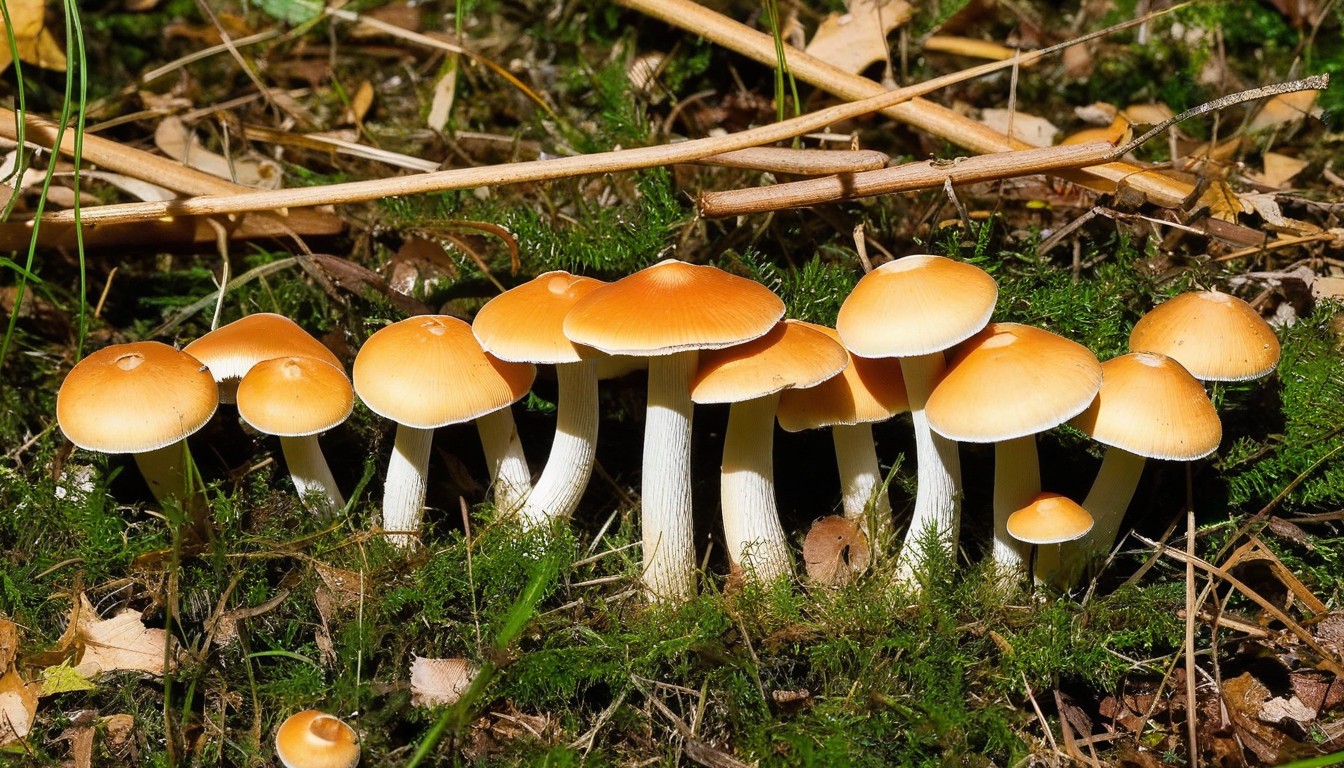
New Jersey’s diverse geography and climate provide the perfect conditions for various mushroom species to thrive. Here are some of the most common mushroom species you can find in the state:
|
Mushroom |
Distinctive Characteristics |
Habitat |
|---|---|---|
|
Morels |
Conical cap with ridges and hollow stem |
Deciduous forests and woodland clearings in spring |
|
Chanterelles |
Deep golden color and wavy cap, with funnel-shaped stem |
Coniferous and hardwood forests in summer and fall |
|
Oyster Mushrooms |
Flat, oyster-shaped cap, with white to brown coloration |
Dead hardwood trees or logs, year-round |
|
Hen of the Woods |
Cluster of overlapping gray-brown caps, with distinctive scent |
Base of oak trees in fall |
|
Black Trumpet |
Thin and wavy cap with a trumpet-like shape, with wrinkle underside |
Deciduous forests and coniferous forests in summer and fall |
Note that these are just some of the many mushroom species that can be found in New Jersey, and some may be poisonous or have similar-looking toxic relatives. Proper identification is crucial when foraging for mushrooms. Make sure to consult a reliable field guide or seek guidance from an experienced forager before consuming any wild mushrooms.
Identifying Edible Mushrooms
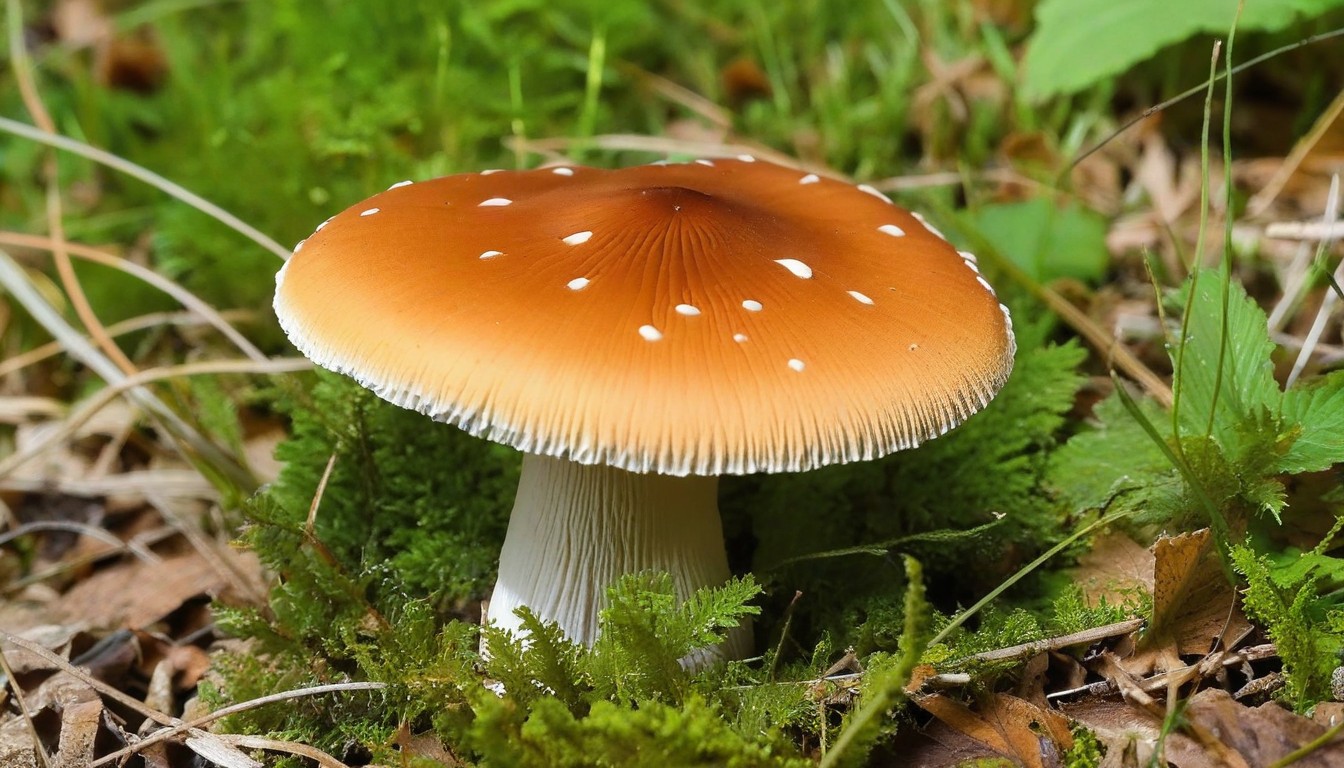
Identifying edible mushrooms is essential for safe foraging in New Jersey. One way to avoid accidentally consuming toxic mushrooms is to become familiar with the key distinguishing features of edible varieties. Here are some helpful tips and techniques to help you identify common edible mushrooms found in the Garden State:
|
Mushroom Name |
Cap |
Gills |
Stem |
Other Features |
|---|---|---|---|---|
|
Morel |
Conical shape; honeycomb textured cap |
Absent; cap attached to stem |
Hollow; gray, cream or brown color |
Found in open woods and near ash trees |
|
Chanterelle |
Trumpet-shaped cap; often bright yellow or orange |
Forked ridges; rounded and thick |
Meaty and firm; often same color as cap |
Found near hardwood trees |
|
Oyster Mushroom |
Fan-shaped cap; often gray, brown or blue-gray |
Parallel gills; white to cream in color |
Short and stubby; often attached laterally |
Found on logs and fallen trees |
Note: These mushrooms should only be consumed if properly identified by an experienced forager and cooked thoroughly.
Keep in mind that some toxic mushrooms may resemble edible varieties in appearance. For example, the deadly galerina mushroom resembles the edible honey mushroom, but can be distinguished by its smaller size and different gill pattern. It’s always best to err on the side of caution and avoid eating any mushrooms that you are unsure about.
In the next section, we will discuss specific toxic mushrooms to avoid when foraging in New Jersey.
Toxic Mushrooms to Avoid
When foraging for mushrooms in New Jersey, it is essential to be aware of the toxic species that grow in the region. Mistaking a poisonous mushroom for an edible one can have serious consequences, including organ damage and even death.
Potentially Toxic Mushrooms Found in New Jersey
|
Mushroom |
Toxicity |
Symptoms |
|---|---|---|
|
Death Cap |
Deadly |
Abdominal pain, vomiting, dehydration, coma, and death. |
|
Destroying Angel |
Deadly |
Abdominal pain, vomiting, dehydration, coma, and death. |
|
False Morel |
Potentially Deadly |
Abdominal pain, vomiting, diarrhea, and in severe cases, liver damage. |
|
Pale Webcap |
Potentially Deadly |
Abdominal pain, vomiting, diarrhea, and in severe cases, liver damage. |
Aside from the ones listed above, other toxic mushrooms found in New Jersey include the Jack O’Lantern and the Panther Cap. These mushrooms contain toxins that can cause a range of symptoms, from mild gastrointestinal discomfort to severe organ damage.
Always err on the side of caution if you are unsure about the edibility of a mushroom. Remember, it’s better to be safe than sorry! Avoid consuming any mushroom that you are not 100% certain is safe to eat.
Next, we’ll cover the seasonal variation in mushroom availability in New Jersey.
Seasonal Variation in Mushroom Availability
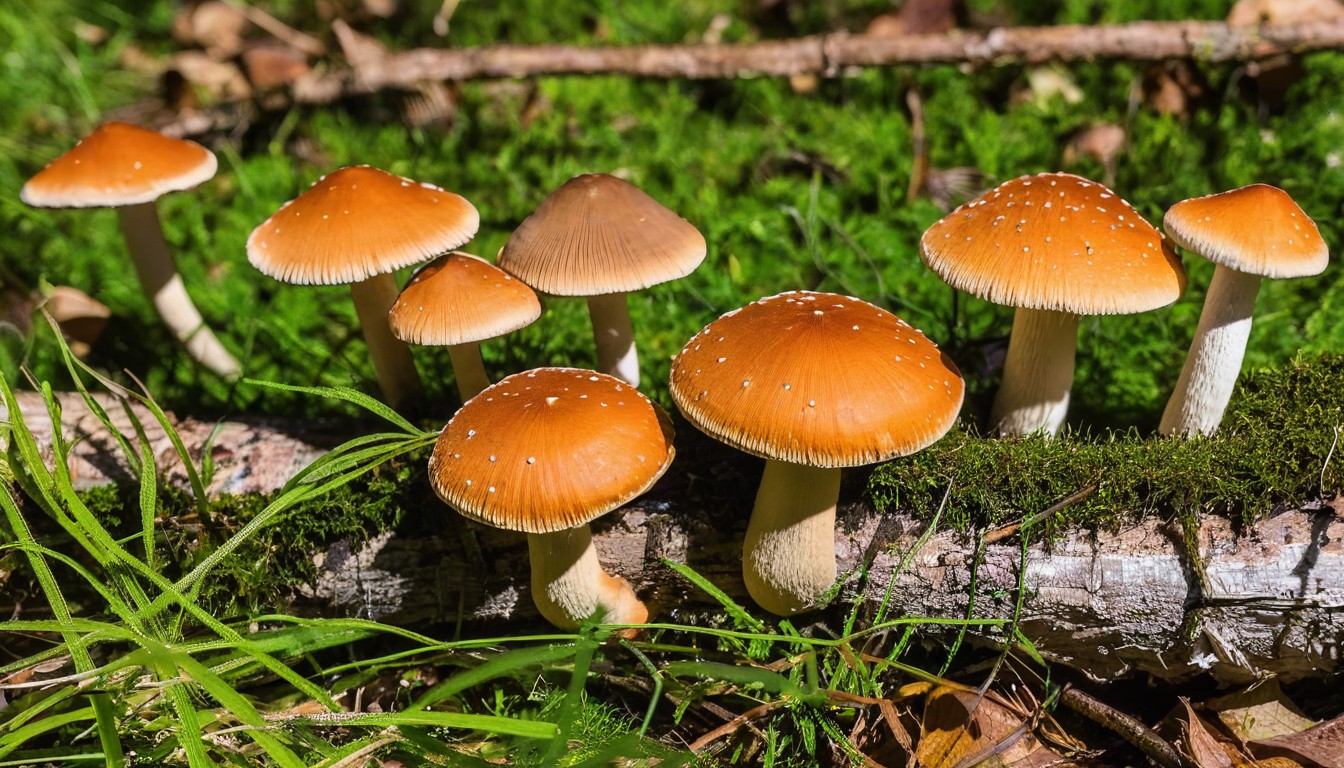
Mushroom foraging relies heavily on understanding the seasonal patterns of different species that grow in New Jersey. Mushrooms exhibit distinct growth cycles and are influenced by various environmental factors, such as precipitation, temperature, and sunlight exposure.
Spring
|
Mushroom Species |
Timeframe |
|---|---|
|
Morels |
March to May |
|
Ramps |
April to May |
|
Oyster Mushrooms |
April to June |
Summer
In the summer months, mushroom growth slows down due to the dry conditions. However, with enough rainfall, you may find the following species:
- Chanterelles (June to August)
- Black Trumpet (July to September)
- Chicken of the Woods (June to August)
Fall
The fall season is the best time for mushroom foraging due to favorable conditions, such as lots of rainfall, high humidity and cooler temperatures. You can expect to find the following species:
|
Mushroom Species |
Timeframe |
|---|---|
|
Honey Mushrooms |
August to November |
|
Hen of the Woods |
September to November |
|
Porcini Mushrooms |
September to November |
Always make sure to check the weather forecast before heading out on a mushroom foraging trip. Rainy and humid conditions are ideal for mushroom growth, while droughts can significantly reduce mushroom populations.
Best Foraging Locations in New Jersey
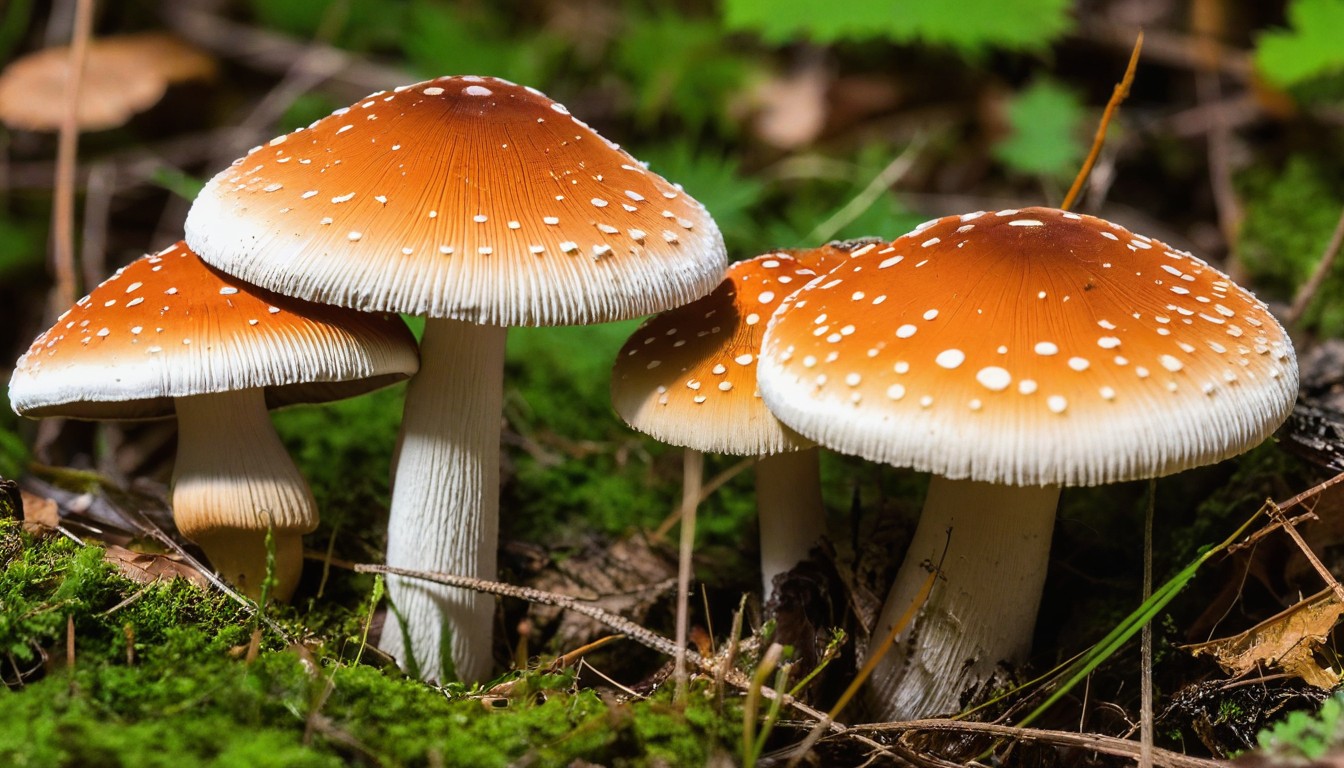
If you’re looking for the best foraging locations in New Jersey, you’re in luck! The state boasts a diverse array of habitats that are prime spots for finding mushrooms. Here are some of the top locations to explore:
|
Location |
Features |
|---|---|
|
High Point State Park |
A prime location for morel and chanterelle mushrooms, with over 15,000 acres of forest to explore. |
|
Wharton State Forest |
The largest state forest in New Jersey, where you can find a wide variety of mushrooms, including oyster and hen of the woods varieties. |
|
Delaware Water Gap National Recreation Area |
An excellent spot for mushroom hunting, with plenty of trails and diverse habitats to explore. |
|
Cape May County Park & Zoo |
Although a lesser-known location, this park has a variety of habitats, such as woodlands and grasslands, perfect for finding different mushroom species. |
Don’t overlook your backyard as a potential foraging spot! If you have a lawn or wooded area, you may just find some mushrooms popping up.
Remember to always obtain permission before foraging on private property, and be respectful of nature by leaving minimal impact on the environment.
Useful Tools and Equipment for Mushroom Foraging
If you are serious about mushroom foraging, having the right tools and equipment is essential. Here is a comprehensive list of items that can help enhance your foraging experience:
|
Field Guide |
A reliable field guide is a must-have for identifying different mushroom species. Look for a guide with clear images and detailed descriptions to help you distinguish between edible and toxic varieties. |
|---|---|
|
Basket or Bag |
Use a sturdy basket or bag to store your mushroom haul. Choose a size that is easy to carry and has enough room for your harvest. |
|
Knife |
A sharp knife is handy for cutting through mushroom stems and removing any dirt or debris. Make sure the blade is appropriately sized for the mushrooms you are foraging. |
|
Magnifying Lens |
A magnifying lens can come in handy if you need to take a closer look at the mushroom’s intricate details, such as gills or spores. |
|
Light Source |
If you plan on foraging early morning or late at night, a flashlight or headlamp can help you navigate through dimly lit areas and locate mushrooms more quickly. |
|
Stay Hydrated |
Make sure to bring a water bottle or hydration pack to stay hydrated during your foraging trips. |
By having these mushroom foraging tools and equipment on hand, you can elevate your foraging experience and make it safer and more enjoyable.
Cooking and Preserving Mushrooms
After a successful foraging trip, your harvested mushrooms are ready for the kitchen! Here are some simple cooking tips and preservation techniques to ensure you get the most out of your harvest:
Cooking Tips
When cooking mushrooms, it’s important to remember that different varieties have unique flavors and textures. For example:
|
Mushroom Variety |
Best Cooking Method |
|---|---|
|
Portobello |
Grilling, broiling, or roasting |
|
Shiitake |
Sautéing or stir-frying |
|
Button or Cremini |
Sautéing, grilling, or roasting |
Experiment with different cooking methods and seasoning combinations to find your favorite way to enjoy your mushrooms!
Preserving Techniques
Not all mushrooms freeze or store well, so it’s important to know which varieties lend themselves to preservation techniques like:
- Drying
- Freezing
- Pickling
- Canning
For example, shiitake and morel mushrooms can be dried and stored for extended periods while maintaining their flavor and texture.
By cooking and preserving your mushrooms, you can savor their unique flavors and extend their shelf-life for future enjoyment.
Mushroom Foraging Etiquette
When hunting for mushrooms, it’s crucial to follow proper etiquette to protect the environment and ensure sustainability. Here are some essential tips to keep in mind:
- Respect protected areas: Ensure you have permission to forage and avoid collecting in protected areas.
- Harvest responsibly: Only pick what you need and leave some behind to preserve the mushroom population and support the ecosystem.
- Avoid damaging the habitat: Only step where necessary and avoid damaging the soil, plants, or fungi around the mushrooms.
- Properly dispose of waste: Dispose of any litter properly and don’t leave any trace of your foraging activity.
- Learn and educate: Learn about the mushrooms you are foraging, their habitats, and any regulations surrounding foraging. Share your knowledge with others to promote responsible mushroom hunting.
By following these etiquette guidelines, you can protect the environment and ensure a sustainable supply of mushrooms for future foragers to enjoy. Happy hunting in New Jersey!
Conclusion
In conclusion, mushroom foraging in New Jersey is a one-of-a-kind experience that can be both exhilarating and educational. By following the safety precautions and identifying edible mushrooms, you can explore the wonders of the Garden State and truly appreciate what nature has to offer.
Remember to respect the environment and practice good mushroom foraging etiquette to help preserve these natural resources for generations to come. With the right tools, a sense of adventure, and an appreciation for the great outdoors, you can embark on a rewarding journey of mushroom foraging in New Jersey. Happy hunting!
FAQ
What are the benefits of mushroom foraging?
Mushroom foraging is not only a fun and rewarding activity but also offers several benefits. It allows you to connect with nature, exercise your observational skills, and potentially find nutritious and delicious mushrooms to enjoy.
How can I stay safe while mushroom foraging?
Safety is important when engaging in mushroom foraging. Here are some safety precautions to keep in mind:
1. Always consult reliable sources and use field guides to properly identify mushrooms.
2. Learn to distinguish toxic mushrooms from edible varieties, as consuming poisonous mushrooms can be extremely dangerous.
3. Avoid foraging in areas that may be contaminated with pesticides or other pollutants.
4. Use proper gear, such as gloves, a knife, and a basket, to handle mushrooms and avoid damaging ecosystems.
5. Notify someone of your location and plan when going foraging, especially if you’re exploring unfamiliar territory.
6. If you’re unsure about the edibility of a mushroom, it’s best to err on the side of caution and avoid consuming it.
What are some common mushroom species found in New Jersey?
New Jersey is home to various mushroom species. Some of the most common ones found in the state include the morel, chanterelle, oyster mushroom, maitake, and hen of the woods. Each species has its own unique characteristics and can be found in specific habitats.
How can I identify edible mushrooms in New Jersey?
Identifying edible mushrooms requires knowledge and practice. Here are some general tips:
1. Pay attention to key features such as cap shape, gill formation, and color.
2. Take note of the habitat where the mushroom is growing, as some edible mushrooms have specific ecological preferences.
3. Learn to distinguish edible mushrooms from toxic look-alikes.
4. Practice with field guides, join mushroom identification workshops or forays, or consult experienced foragers for assistance in honing your identification skills.
Which toxic mushrooms should I avoid in New Jersey?
It is crucial to be aware of toxic mushrooms to avoid accidental poisoning. In New Jersey, some toxic species to watch out for include the death cap, destroying angel, and deadly galerina. These mushrooms can be easily confused with edible varieties, making proper identification essential.
When are certain mushrooms more abundant in New Jersey?
Mushroom growth is influenced by seasonal changes. In New Jersey, certain mushrooms are more abundant during specific times of the year. For example, morels can be found in the spring, while chanterelles and boletes are more common in the summer and fall. Understanding the seasonal patterns will help you plan your foraging outings accordingly.
Where are the best locations for mushroom foraging in New Jersey?
New Jersey offers various habitats that are favorable for mushroom growth. Forests, parks, and even your own backyard can be fruitful foraging spots. Some specific locations to consider are the Pine Barrens, the Delaware Water Gap, and the Appalachian region. Exploring different areas will increase your chances of finding a diverse array of mushrooms.
What tools and equipment do I need for mushroom foraging in New Jersey?
Having the right tools and equipment can enhance your foraging experience. Here are some essential items to consider:
1. Field guide or mushroom identification book to help with species identification.
2. A basket or foraging bag to carry your collected mushrooms.
3. Gloves to protect your hands from possible irritants or thorns.
4. A knife for safely harvesting mushrooms.
5. A magnifying lens or hand lens to examine important mushroom features more closely.
Always pack these items when going mushroom foraging to ensure you are well-prepared.
How can I cook and preserve the mushrooms I find?
Once you have successfully foraged mushrooms, there are many delicious ways to prepare them. You can sauté them, add them to pasta dishes or soups, or even use them in unique recipes like mushroom risotto. To preserve mushrooms, you can dry them, pickle them, or freeze them for later use. Properly preserving and storing your harvest will ensure that you can enjoy your foraged mushrooms for an extended period.
What etiquette should I follow when mushroom foraging?
Respecting nature and the environment is essential when engaging in mushroom foraging. Here are some etiquette guidelines to follow:
1. Only take what you need and leave some mushrooms behind for others and for ecological balance.
2. Avoid damaging the environment by not trampling on plants or disturbing wildlife habitats.
3. Be mindful of private property and obtain permission before foraging on someone else’s land.
4. Remove any litter or debris you encounter during your foraging outings to help maintain the cleanliness of natural areas.
By practicing good mushroom foraging etiquette, you contribute to the sustainability and preservation of mushroom habitats.

